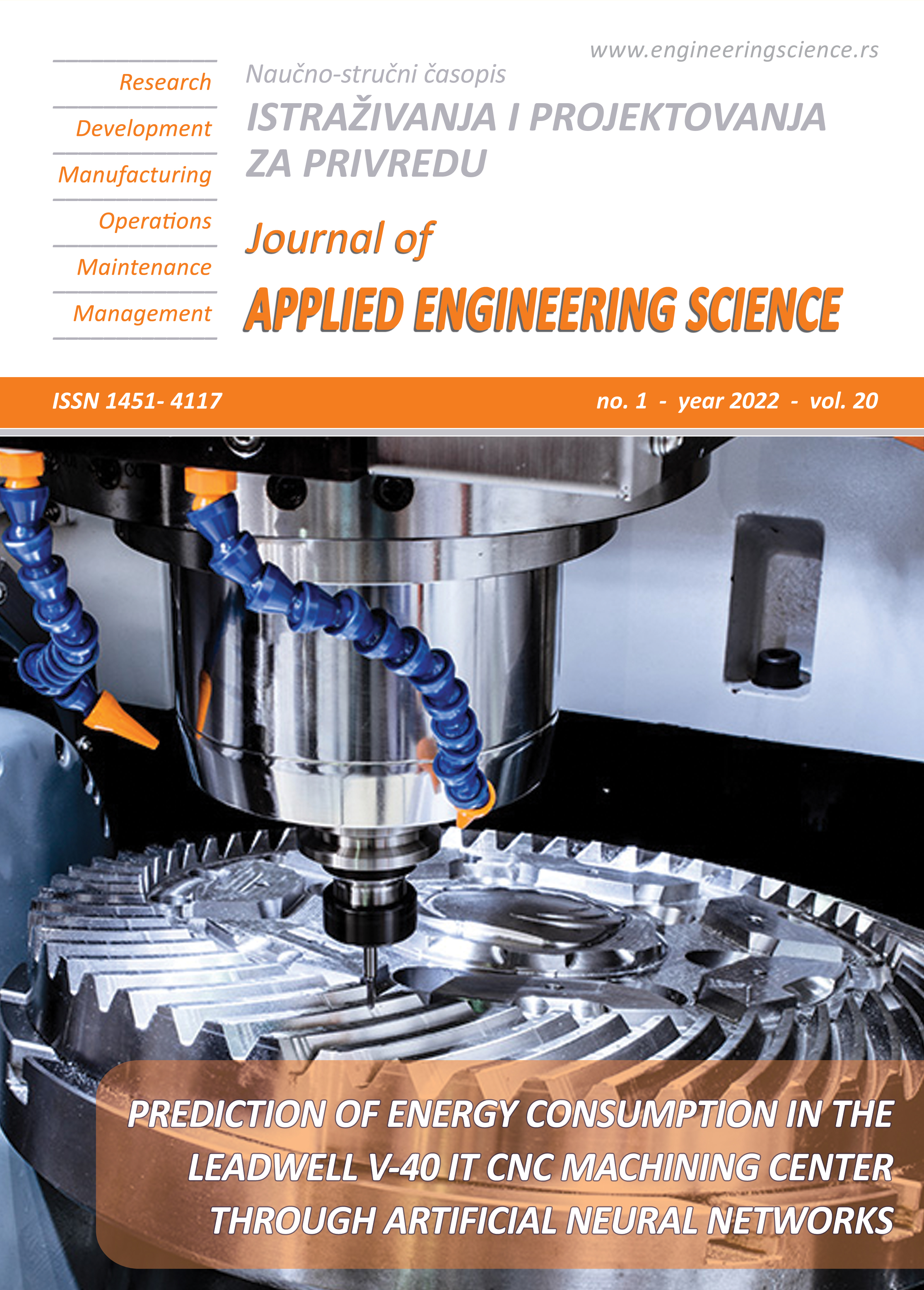DEVELOPMENT OF METHODS FOR ASSESSING THE SAFETY OF LIGHT HYDROCARBON STORAGE FACILITIES IN EMERGENCY SITUATIONS
Abstract
The risk of accidents involving light hydrocarbons is caused by the physicochemical properties of the components, primarily propane and butane. The most catastrophic accidents involving these substances were on November 19, 1984, in the city of San Juan Ixhuatepec (Mexico) and on June 4, 1989, on the Asha – Ulu-Telyak section (USSR), in each of which more than 500 people died. The novelty of the study is determined by the requirement to ensure industrial and fire safety of storage facilities for light hydrocarbons by predicting probable zones of air flow stagnation. The authors calculated the formation of probable air stagnation zones for various space-planning solutions by using a three-dimensional modelling system and the finite volume method. The paper developed a methodology for assessing the safety of storage facilities for light hydrocarbons in emergency situations, which is based on the analysis of probable air stagnation zones by using three-dimensional modelling systems. The practical significance of the study is determined by the additional development of a parameter for assessing the safety state of a storage facility for light hydrocarbons (Ks) and a resulting parameter (Kr) for calculating the optimal location of structures and their structural changes. Integration of stagnation zone sizes into a single formula with the results of other safety calculations is an urgent scientific and applied problem.
References
Fu, H.-R., Wang, F., Zhang, J. (2015). A stable zinc-4-carboxypyrazole framework with high uptake and selectivity of light hydrocarbons. Dalton Transactions, vol. 44, no. 6, 2893-2896, DOI: 10.1039/c4dt03594a.
Huang, P., Chen, C., Wu, M., Jiang, F., Hong, M. (2019). An indium-organic framework for the efficient storage of light hydrocarbons and selective removal of organic dyes. Dalton Transactions, vol. 48, no. 17, 5527-5533, DOI: 10.1039/c9dt00902g.
Anderson, J.S., Romanak, K.D., Meckel, T.A. (2018). Assessment of shallow subsea hydrocarbons as a proxy for leakage at offshore geologic CO2 storage sites. International Journal of Greenhouse Gas Control, vol. 74, 19-27, DOI: 10.1016/j.ijggc.2018.04.010.
Vasilyev, A.O., Shemanin, V.G., Chartiy, P.V. (2011). IR detector for hydrocarbons concentration measurement in emissions during petroleum and oil products storage and transportation. Proc. SPIE 8155, Infrared Sensors, Devices, and Applications; and Single Photon Imaging II, 81550T (16 September 2011), DOI: 10.1117/12.893371
Anderson, J., Romanak, K., Alfi, M., Hovorka, S. (2019). Light hydrocarbon and noble gas migration as an analogue for potential CO2 leakage: numerical simulations and field data from three hydrocarbon systems. Greenhouse Gases: Science and Technology, 9, no. 2, 226-244, DOI: 10.1002/ghg.1841.
Zhao, X., Gong, G., Wu, S. (2018). Effect of storage time and temperature on parent and oxygenated polycyclic aromatic hydrocarbons in crude and refined vegetable oils. Food Chemistry, vol. 239, 781-788, DOI: 10.1016/j.foodchem.2017.07.016.
Gong, G., Wu, S., Wu, X. (2018). Influences of light intensity and β-carotene on polycyclic aromatic hydrocarbons and aldehydes in vegetable oil: a case study using palm oil. Journal of Agricultural and Food Chemistry,vol. 66, no. 42, 11124-11132, DOI: 10.1021/acs.jafc.8b04096.
Cañipa-Morales, N.K., Galán-Vidal, C.A., Guzmán-Vega, M.A., Jarvie, D.M. (2003). Effect of evaporation on C7 light hydrocarbon parameters. Organic Geochemistry, 34, no. 6, 813-826, DOI: 10.1016/S0146-6380(03)00002-0.
Iaiani, M., Casson Moreno, V., Reniers, G., Tugnoli, A., Cozzani, V. (2021). Analysis of events involving the intentional release of hazardous substances from industrial facilities. Reliability Engineering and System Safety, vol. 212, article number 107593, DOI: 10.1016/j.ress.2021.107593.
Lauritsen, H., Kassold, S., Meneguolo, R., Furre, A. (2018). Assessing potential influence of nearby hydrocarbon production on CO2 storage at Smeaheia. Fifth CO2 Geological Storage Workshop 2018, p. 1-5, DOI: 10.3997/2214-4609.201802970.
Belmabkhout, Y., Mouttaki, H., Eubank, J.F., Guillerm, V., Eddaoudi, M. (2014). Effect of pendant isophthalic acid moieties on the adsorption properties of light hydrocarbons in HKUST-1-like tbo -MOFs: Application to methane purification and storage. RSC Advances, 4, no. 109, 63855-63859, DOI: 10.1039/c4ra12432d.
Liu, X., Fan, W., Zhang, M., Li, G., Liu, H., Sun, D., Guo, W. (2018). Enhancing light hydrocarbon storage and separation through introducing Lewis basic nitrogen sites within a carboxylate-decorated copper-organic framework. Materials Chemistry Frontiers, vol. 2, no. 6, 1146-1154, DOI: 10.1039/c8qm00105g.
Fan, W., Liu, X., Wang, X., Li, Y., Xing, C., Wang, Y., Sun, D. (2018). A fluorine-functionalized microporous In-MOF with high physicochemical stability for light hydrocarbon storage and separation. Inorganic Chemistry Frontiers, vol. 5, no. 10, 2445-2449, DOI: 10.1039/c8qi00652k.
Kanazawa, T. (2004). Development of hydrocarbon adsorbents, oxygen storage materials for three-way catalysts and NOx storage-reduction catalyst. Catalysis Today, vol. 96, no. 3, 171-177, DOI: 10.1016/j.cattod.2004.06.119.
Chen, B. (2017). An ultrastable and easily regenerated HOF for the selective storage and separation of light hydrocarbons. Science China Chemistry, 60, no. 6, 683-684, DOI: 10.1007/s11426-017-9045-9.
Liu, X., Li, X., Li, J., Li, G., Guo, S., Zhu, H., Guo, W. (2018). Anionic NbO-type copper organic framework decorated with carboxylate groups for light hydrocarbons separation under ambient conditions. Journal of Materials Science, vol. 53, 8866-8877, DOI: 10.1007/s10853-018-2155-1.
Fan, W., Wang, X., Zhang, X., Liu, X., Wang, Y., Kang, Z., Sun, D. (2019). Fine-tuning the pore environment of the microporous Cu-MOF for high propylene storage and efficient separation of light hydrocarbons. ACS Central Science, vol. 5, no. 7, 1261-1268, DOI: 10.1021/acscentsci.9b00423.
Omelchuk, M.V. (2017). Scientific substantiation of the methodology for assessing the safety of storage facilities for light hydrocarbons in emergency situations. Ufa State Oil Technical University, Ufa.
Permyakov, V.N., Parfenov, V.G., Omelchuk, M.V. (2015). Methodology for assessing the stability of storage facilities for liquefied hydrocarbon gases. Safety and Emergency Issues, vol. 6, 73-79.
Wang, Y., Wang, X., Wang, X., Zhang, X., Fan, W., Liu, D., Sun, D. (2019). Effect of functional groups on the adsorption of light hydrocarbons in FMJ-type metal-organic frameworks. Crystal Growth and Design,vol.19, no. 2, 832-838, DOI: 10.1021/acs.cgd.8b01403.
Wang, J., Elsworth, D. (2020). Fracture penetration and proppant transport in gas- and foam-fracturing. Journal of Natural Gas Science and Engineering, vol. 77, article number 103269, DOI: 10.1016/j.jngse.2020.103269.
Fu, H.-R., Zhang, J. (2015). Flexible porous zinc-pyrazole-adenine framework for hysteretic sorption of light hydrocarbons. Crystal Growth and Design, 15, no. 3, 1210-1213, DOI: 10.1021/cg5016093.

